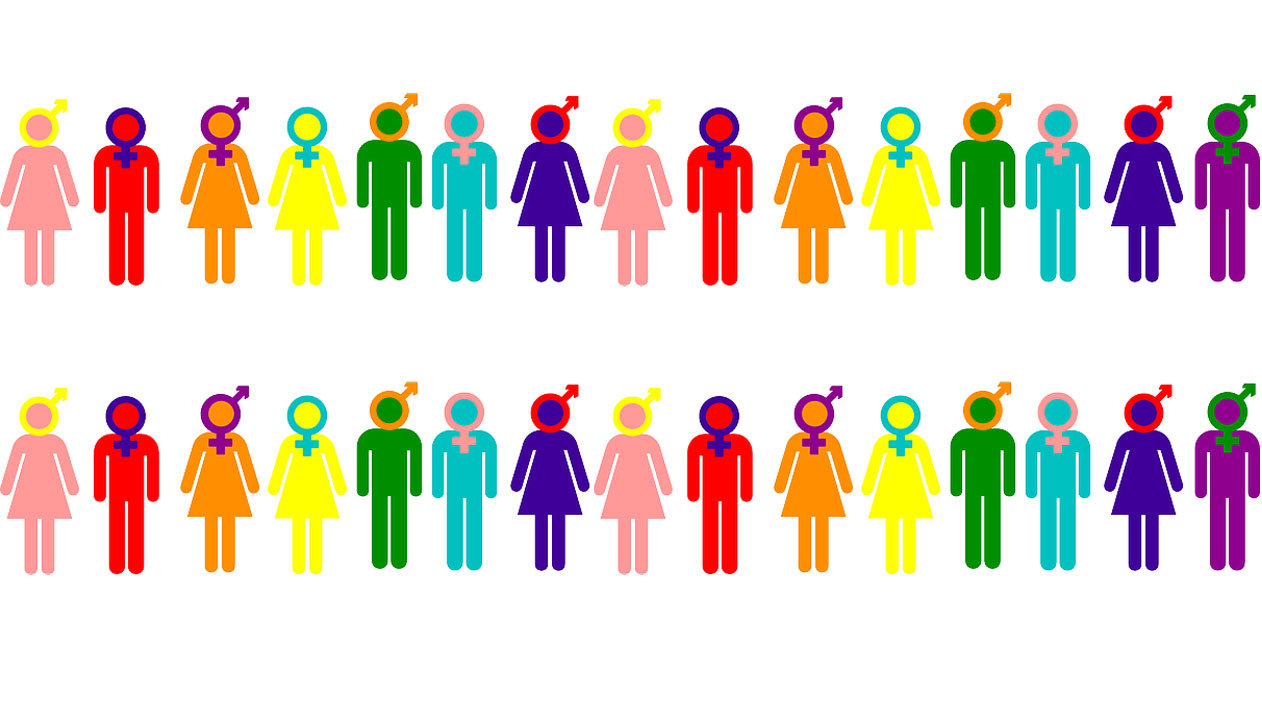Defining your gender outside of the binary of female or male is something which can often feel rather redundant in mainstream space, for multiple reasons. While so many seek to package us into acceptable female/male categories, our gender identities are constantly tugged and twisted into arbitrary categories designed to make others feel comfortable. When society demands that you, your body, your emotions, your skills, your dress, must fit within a binary, defining as non-binary gender continues to be a tool of community and political empowerment in an otherwise impossibly constrictive gender environment into which we are born.
The gender conversation is something which has been a focus within mainstream media for a while now. Every newspaper and magazine worth reading has been part of the discussion, and it’s undeniable that the mainstreaming of discourse surrounding issues such as trans, drag, and gender non-conformity in its many forms has been hugely educational for people who might never normally have come across such discussions. But while the media continues to superficially pick apart normative understandings of gender, why does it feel like attitudes to any form of non-binary gender presentation in public space have not moved forward at all?
Both systemic and personal oppression continues to be a fact of daily life for anyone whose identity questions the socially acceptable gender binary. Much like buying cigarettes or milk, we begin to normalise, and even expect, experiences of abuse linked with our apparently non-binary gender identities. This is unavoidable, it is really quite impossible to move in spaces where being mis-gendered by others isn’t on the agenda.
Behind our bedroom doors, or within the four walls of our city’s ever dwindling queer spaces, we can find places where one can express, explore, and forget their gender – and these spaces, for the most part, feel safe. But in order to maintain this personal safety within public space one often has to be covert, and offer a much more ‘digestible’ presentation of our gender non-conforming selves in order to be received by the world.
So while we feel as though we are becoming more accepted online and in the pages of print journalism, everything from aggressive prejudice to subtle mis-gendering remains a constant part of our social landscape, however digestible we may appear to a mainstream audience.
Everyone’s binary understanding of the world begins the moment we’re born. We are all deprived of the skills — in language, in education, in aesthetics — to comprehend the body, and ultimately the person, outside of a female/male gendered system ‘what long, girly eyelashes they have’, ‘Wow you have muscular arms’, ‘your voice is so high, like a little girl!’, ‘Mummy what’s wrong with that boy, he’s wearing a skirt?’
Our gendered discourse is questioned incredibly infrequently in our developing years. Both home and school often feel like a fight to stay un-bullied; who has time to work on their personal gender definitions when battling through a rather perfunctory, yet voluminous, education and the complex social hierarchy that is school?
So here we have it: we are birthed into, trained with, conditioned by, employed in, legalised via, described using, binary gender categories. Exploring one’s own binary non-conformism is continuous throughout life and often has to be a process of self education. As we continue to come up against yet more structures that aim to tether us to the categories of one or the other gender we are constantly remodelling our own gender identities, while our critics remain un-questioning of their binary position. Continued education of those we interact with on a daily a basis is potentially a means toward feeling more accepted, but why does the onus of educating others fall upon those who do not benefit from fitting within the socially advantageous gender binary in the first place?
In our own space, once we have battled with the apparent ‘failure to fit into the socially acceptable binary’ and have worked hard to create a safe space (perhaps alone, perhaps in a wonderfully supportive group of allies) we can temporarily escape our body longing. It is the outside world’s categorisation and gendering of us that results in damaging, belittling and potentially traumatic gendering. And of course we can express our gender, or our rejection of it full stop, in any way we feel in public space, but it is others who will continue to jeopardise our safety for as long as we are seen through their binary gender lens. While the media continue to paw over the same aspects of the gender conversation, it is our language and our categories which everyone should be questioning, in the on-going pursuit of demolishing gender stereotypes.
Credits
Text Tom Rasmussen
